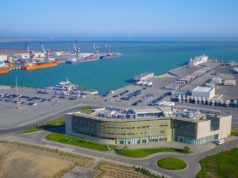Russian-Turkish joint energy project – Turkish Stream pipeline – is gaining a clearer outline as Ankara has approved the final version of Environmental Impact Assessment (EIA).
Turkey’s Ministry of Environment and Urbanization has approved the EIA for the offshore section of the TurkStream Offshore Gas Pipeline.
The draft EIA was prepared by ELC Group Inc. on behalf of South Stream Transport B.V., the project owner, and published on June 21.
The document was later reviewed by Review and Evaluation Commission (REC), consisting of 23 relevant institutions and authorities.
The REC members submitted their opinions on the draft EIA in writing. The EIA has been amended in line with these opinions. All REC members have now provided a positive opinion on the EIA to the Turkish Ministry of Environment and Urbanization.
The EIA consists of information on the potential environmental and social impacts of the offshore section of the TurkStream project. It also includes recommendations for the mitigation of the potential adverse impacts and enhancement of the beneficial ones.
The Turkish Stream envisages the construction of a gas pipeline along the seabed of the Black Sea to Turkey’s European part and further on to the border with Greece. Russia and Turkey signed an intergovernmental agreement on the implementation of the Turkish Stream project in October 2016.
The first stretch will be intended for the Turkish market and the second will supply natural gas to countries of South and Southeast Europe. Each stretch will have a capacity of 15.75 billion cubic meters of natural gas annually. The pipeline is expected to annually pump 31.5 billion cubic meters of natural gas.
Gazprom launched the construction of the Turkish Stream gas pipeline’s offshore section near the Russian coast of the Black Sea on May 7. The company has already built around 300 kilometers of the Black Sea segment of the TurkStream gas pipeline. The first line is scheduled for completion in March 2018 and the second in 2019.
Turkey is the second largest market for Gazprom as it imports about 60 percent of its gas from Russia.
Meanwhile, Russia’s Gazprom announced that it increased gas supplies to Turkey by 24 percent in January-September 2017 compared to the same period last year.
In addition, gas supplies to Serbia in January-September were increased by 31.7 percent, to Hungary – by 26.9 percent, to Bulgaria – by 9.9 percent and to Greece – by 16.5 percent.
The exports of Russian gas to non-CIS countries raised by 11.3 percent to 141.2 billion cubic meters in January-September 2017.
In 2016, Gazprom’s gas supplies to non-CIS countries went up to more than 179.3 billion cubic meters (by 12.5 percent), which was a historic maximum.
In early September, Gazprom CEO Alexei Miller said that the company in 2017 expects an absolute record for the export of gas to distant countries – about 190 billion cubic meters.
© Content from this site must be hyperlinked when used






